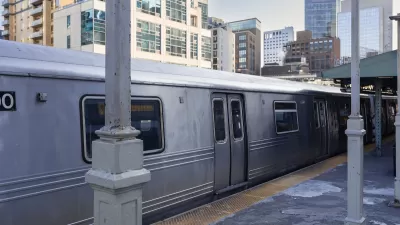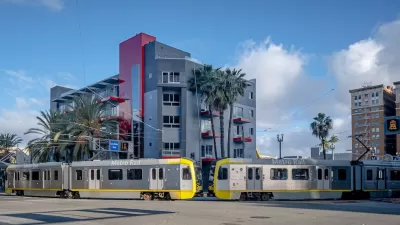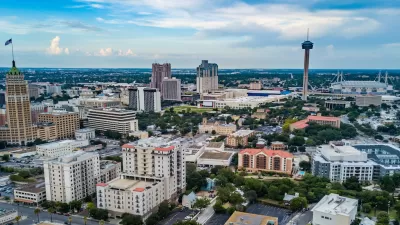Transit providers are often major landowners in their communities, controlling underutilized properties like park-and-ride lots or storage and maintenance facilities. These sites are also opportunities to provide desperately needed affordable housing

Public transit providers are struggling to make ends meet. Many agencies are in a vicious cycle: the increased use of ride-hailing and bike-sharing services means fewer riders, creating a decline in revenue, which, along with the chronic lack of funding, results in further service cuts. It doesn’t help that in many communities, an affordable housing shortage has displaced lower-income riders who typically rely on transit.
Phil Washington of Los Angeles Metro once said, “I don’t want to build new tracks, I want to make sure people can live near our transit.” It is this same spirit that is behind affordable housing advocates finding new allies—in public transit agencies.
Los Angeles’ Metro transit agency is one several around the nation that has focused on transit-oriented development and either partnered with affordable housing developers or promoted affordable housing near its stations. Since 2016, Metro has distributed $9 million in low-interest rate loans for affordable housing on land adjacent to its stations as part of its Joint Development Program. Like other agencies, Metro also has an explicit affordable housing policy, requiring that at least 35 percent of all housing units developed on its properties be set aside for households making less than 60 percent of the area median income, or roughly $56,000 per year. The program has generated more than 700 subsidized affordable units near the agency’s rapidly expanding system, with another 162 affordable units in construction, and almost 600 more in negotiation.
It turns out that transit agencies have a lot to gain from affordable housing. Transit providers are often major landowners in their communities, controlling underutilized properties like park-and-ride lots or leftover pieces of land from the construction of a new project, or storage and maintenance facilities. These sites are also opportunities to provide desperately needed affordable housing, which in turn creates increased ridership from residents and visitors, as well as additional revenue. For instance . . .
FULL STORY: Affordable Housing on Transit Land

Alabama: Trump Terminates Settlements for Black Communities Harmed By Raw Sewage
Trump deemed the landmark civil rights agreement “illegal DEI and environmental justice policy.”

Planetizen Federal Action Tracker
A weekly monitor of how Trump’s orders and actions are impacting planners and planning in America.

The 120 Year Old Tiny Home Villages That Sheltered San Francisco’s Earthquake Refugees
More than a century ago, San Francisco mobilized to house thousands of residents displaced by the 1906 earthquake. Could their strategy offer a model for the present?

In Both Crashes and Crime, Public Transportation is Far Safer than Driving
Contrary to popular assumptions, public transportation has far lower crash and crime rates than automobile travel. For safer communities, improve and encourage transit travel.

Report: Zoning Reforms Should Complement Nashville’s Ambitious Transit Plan
Without reform, restrictive zoning codes will limit the impact of the city’s planned transit expansion and could exclude some of the residents who depend on transit the most.

Judge Orders Release of Frozen IRA, IIJA Funding
The decision is a victory for environmental groups who charged that freezing funds for critical infrastructure and disaster response programs caused “real and irreparable harm” to communities.
Urban Design for Planners 1: Software Tools
This six-course series explores essential urban design concepts using open source software and equips planners with the tools they need to participate fully in the urban design process.
Planning for Universal Design
Learn the tools for implementing Universal Design in planning regulations.
Clanton & Associates, Inc.
Jessamine County Fiscal Court
Institute for Housing and Urban Development Studies (IHS)
City of Grandview
Harvard GSD Executive Education
Toledo-Lucas County Plan Commissions
Salt Lake City
NYU Wagner Graduate School of Public Service





























